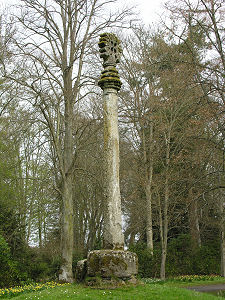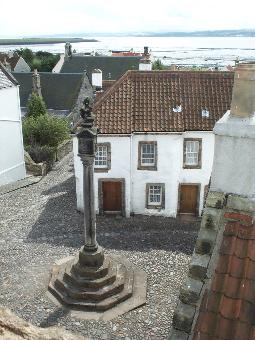| This Week’s Topic… | |

Best viewed in
|


 Mercat Cross The Mercat Cross (Market Cross), was the symbol of a burgh's right to trade and was located centrally in the town's market place. Documentary evidence suggests that this monument type existed by at least the 12th century in Scotland, although it is thought that these early examples were wooden. Many of the standing examples date from the 16th and 17th century, but there are also several more elaborate Victorian examples. Some burghs are recorded as having more than one market cross according to the produce sold around their base (e.g. - the 'Fish Cross' and 'Flesh Cross' in Aberdeen). Documentary evidence, particularly in town council records, also refers to all manner of announcements, celebrations and grizzly punishments carried out at the market cross, prompting Mercat Crosses to be described as 'the dreaded theatre of public punishment and shame'! Today they are a symbol of the burgh's heritage, often seen, little contemplated. The essential element of the market cross is not a cross at all, but a shaft crowned with an appropriate heraldic or religious emblem. Heraldic beasts (e.g. the unicorn), armorial bearings and sundials are popular subjects of sculpture for the capital and finial of market crosses. Few actual cross-shapes appear as finials, and where they occur they tend to be stylized. Typically, the earlier, simpler constructions consist of a polygonal shaft with capital and finial, rising from a solid, stepped base. Some of the later examples are more elaborate, according to the available funding within the burgh for their construction. There are five standing examples of the round tower-based type. These consist also of a shaft crowned with capital and finial, surmounting an understructure which can be in the form of either an open, vaulted understructure, or a tower with internal stairs providing access to an elevated, parapet platform. Later, Victorian examples are often based upon a square-shaped pedestal, sometimes tiered, and usually with quite elaborate carving. All of these types tend to be of sandstone. Geographically, market crosses are situated in many town centers in mainland Scotland, with a distribution that tapers to the north and west, according to the existence historically of burghs. There are around 126 standing examples in Scotland. While market crosses are found in other parts of Britain, the architecture of the Scottish examples tends to differ from these in form, style and iconography. |